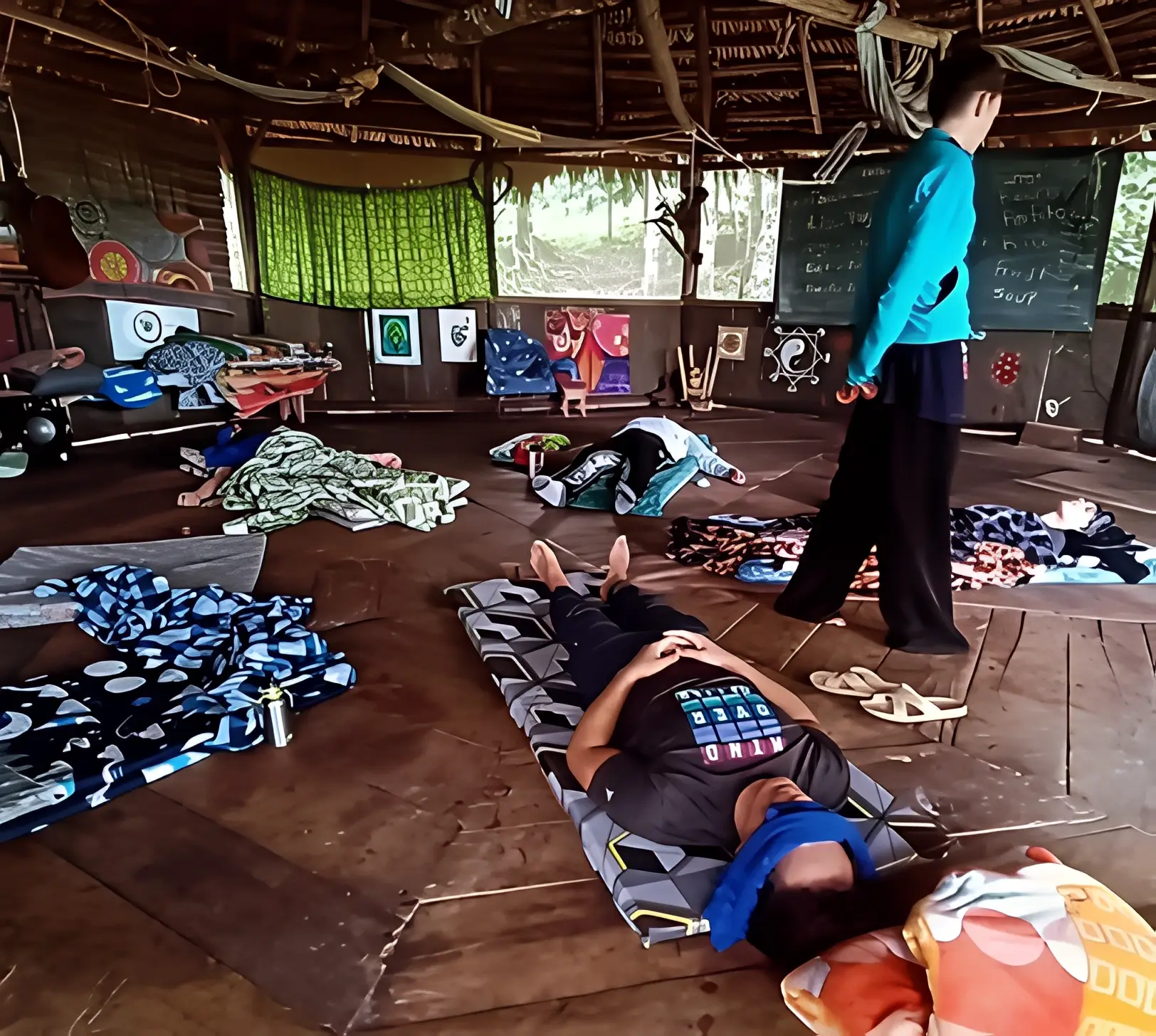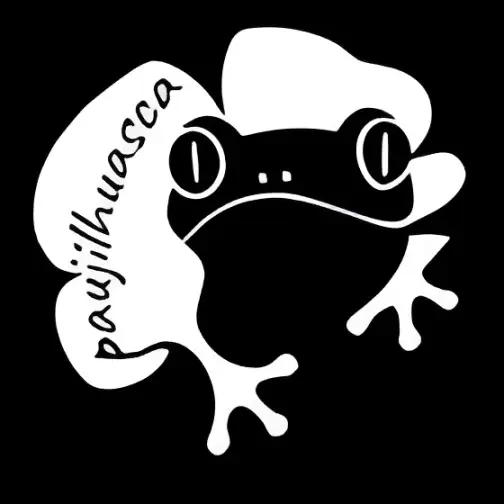Medicines
The Legend of the Eagle and the Condor
The legend of the Eagle and the Condor comes from time immemorial and is spread throughout Central and South America: it speaks of two groups of people, those of the eagle’s lineage and those descended from the condor. The eagle represents the north, masculinity, rationality, and science. On the other hand, the people of the condor are intuitive, creative, sensitive and primordially connected to the female energy and the south. These two groups have competed with one another since the beginning of the time. This legend talks about cycles of time, Pachakuti, lasting 500 years.
The previous cycle started around 1490, the time of the European invasion of the Americas, and it finished around 1990. In this cycle, the People of the Eagle stood victorious, bringing a society based on rational thinking, industrialization, individualism, and masculine power. This Pachakuti corresponds with the time of repression of native cultures connected with mother nature. Since 1990, the people of the condor have started to rise again, looking for balance.

This time in which we live, according to the legend, is the time of the reconciliation of the feminine with the masculine, intuition with rationality, individualism with collectivism. In this context, the legend of the canoe of medicines is born, where the ancestral medicines and spiritual practices of North and Central America combine with those of South America. The canoe of medicines carries ayahuasca and peyote, bufo, yopo, temazcal, kambo, vision quest, sun dance, along with the rituals of coca, magic mushrooms, and San Pedro.
Following this idea, the Paojilhuasca medicine centre combines all of these medicines and practises to treat people in as holistic and personalized way as possible, following each person’s natural predisposition and tendencies. For this reason Paojilhuasca collaborates with shamans from Mexico, Colombia and Brazil.
Traditional Ayahuasca Ceremonies
Ceremonies are held twice a week under the compassionate guidance of Don Gardel or La Maestra Alicia. We aim to make authentic and safe ceremonies. These sessions, lasting from 3 hours to an entire night depending on the group’s needs, offer participants the opportunity to experience the transformative benefits of Ayahuasca. Many find profound emotional healing, clarity, and connection during the ceremonies, and local villagers often join, as Ayahuasca has helped them overcome challenges like alcoholism.
To ensure each participant receives personalized attention and support on their journey, we limit group sizes to a maximum of 10 participants per ceremony.
We prepare our own Ayahuasca brew. You can participate in the making every step of the way. We also add different plants for every ceremony, plants which you can pick with Don Gardel during jungle walks.
We also sell Ayahuasca. For shipping and purchase, please feel free to CONTACT us.
Master Plant Dietas
A master plant dieta is a profound spiritual contract between an individual—whether a curandero or an apprentice—and a specific plant spirit. This is not simply about consuming a plant for its medicinal properties; it is about forging a reciprocal relationship in which the plant imparts its wisdom, guidance, and energetic imprint onto the dietero. Through this deep connection, the plant’s healing essence becomes permanently embedded within the person, offering continued support long after the dieta ends.
The dieta operates on a strict set of agreements that are established beforehand. These agreements dictate the length of the dieta, which can range from as short as seven days to several months or even years for serious practitioners. Often, the plant spirit itself dictates the need for the dieta, either through visions, dreams, or intuition. The dietero must sacrifice worldly pleasures—including sex, alcohol, sugar, salt, and rich foods—to maintain the purity necessary for communion with the plant spirit. In exchange, the plant spirit grants teachings, protection, strength, and sometimes even supernatural abilities.
Isolation is a key component, ensuring that the dietero is free from outside influences that could interfere with the plant’s work. Unlike Western medicine, which targets symptoms, a master plant dieta aims at the root cause of imbalance, treating illness at its spiritual and energetic core. This practice is based on the understanding that plants are sentient beings with their own personalities and intentions—far beyond their biochemical effects. For instance, while chamomile (manzanilla) is known in the West as a stress reliever, its deeper spiritual role in Amazonian tradition is to “lighten the load” and “smooth the way” in all aspects of life.
Read More
A well-conducted dieta is not just a temporary healing experience—it is a permanent initiation into plant intelligence, allowing one to call upon the plant’s power indefinitely. Those who dismiss this process as mere herbalism fail to grasp its full depth. The dieta is not just about plants—it is about transformation, discipline, and the unseen forces that shape our reality.
Around the third or fourth day of the dieta, it is common for the dieter to experience weakness, mood swings, mental instability, and even a sense of desperation. This is a natural part of the process. As the body undergoes physical and energetic changes, the mind follows, creating a state of transition.
At this stage, the dieter is caught between two identities—not yet transformed into the new self, but no longer the old self. This in-between state can feel unsettling, like being in the middle of along tunnel where both the entrance and the exit are obscured in darkness. Doubts arise, discomfort intensifies, and the temptation to abandon the dieta can be strong.
However, this phase is temporary and crucial to the process of transformation. The key is to trust the dieta, surrender to the experience, and push forward with strength and resilience. Once the journey is complete, clarity, strength, and renewed health await.
Hold on, trust the process, and you will emerge stronger.
Breaking the dieta can have serious consequences, as the plant spirit expects the dietero to honour the commitment made at the start of the process. When the contract is broken, the plant spirit may react negatively, causing disturbances such as emotional turmoil, deep unhappiness, nightmares, or even physical accidents. In more severe cases, some experience psychological distress, confusion, or a lingering sense of spiritual disconnection.
Because of these risks, a shaman often acts as a mediator, helping to restore balance and make peace with the plant spirit if a dieta is interrupted improperly. This intervention is sometimes necessary to prevent energetic consequences or misfortunes from unfolding in the dietero’s life.
For this reason, it is crucial to take the dieta seriously—it is not just a personal decision but a sacred agreement with a powerful spiritual force. If you are uncertain about your ability to see it through to the end, it is better not to begin at all. A dieta demands respect, discipline, and commitment, and only those who are truly ready should undertake the journey.
We also sell dried medicine plants.
For shipping and purchase, please feel free to contact us.
Conscious & Connected Breathing
Breathing can be an unconscious connection until you choose to do it consciously.
For those embarking on shamanic journeys, conscious breathing can serve as an invaluable tool. It prepares the mind and body for profound experiences, creating a safe and grounded foundation to explore deeper states of awareness.
Beyond preparation, it also supports the integration of insights gained, helping you align these revelations with your everyday life.
In order to organize life time as healthy and fulfilling as possible, aligned with one’s essence and desires, and prioritizing what truly matters.
By embracing conscious connected breathing, this profound yet simple technique, you can tap into a natural method to deepen your self-awareness, balance your autonomic nervous system to reduce stress, anxiety, and confusion.
It’s a pathway to deep relaxation, allowing you to connect with your inner power, grow autonomy and harness your vital energy.
Supported by decades of research and rooted in ancient traditions, this practice is more than a technique—it’s a gateway to unlocking the full spectrum of your being.

1:1 BREATHWORK SESSIONS AVAILABLE DURING RETREAT & AFTER THROUGHOUT INTEGRATION
Chinese Medicine
At Paojilhuasca, we integrate Traditional Chinese Medicine (TCM) practices—such as moxibustion, cupping, and Qigong (chikung)—alongside Amazonian ancestral medicine to support a truly holistic healing process. This fusion is not simply additive; it’s synergetic, drawing on different wisdom traditions to restore balance across physical, emotional, and energetic dimensions.
Why TCM with Ayahuasca? Ayahuasca can open powerful energetic and emotional processes. But for many participants—especially those from urbanized or disembodied backgrounds—the body needs support to process and ground what emerges. That’s where TCM comes in:
Moxibustion
This warming technique uses burning mugwort to stimulate acupoints, promoting circulation, warming meridians, and dispersing cold or stagnant energy. After ceremonies, it can stabilize the body’s vital energy (Qi) and help digest intense energetic movements triggered by the medicine.
Cupping
Cupping helps to release blockages, toxins, and emotional tension held in the body—especially in the back and shoulders. It facilitates detoxification and relieves muscular and energetic congestion, making space for the integration of insights received during ceremonies.
Qigong (Chikung)
Every morning, before breakfast, we begin with Qigong to awaken the body, harmonize the breath, and center the mind. This daily ritual cultivates presence, strengthens the nervous system, and prepares participants to face the deep work of ceremony with balance and clarity.
Ancestral and Eastern synergy
Amazonian medicine often works through visions, purge, and spirit. TCM brings a systematic and embodied approach to balance and flow. Together, they offer a complementary map of health: one rooted in the rainforest, the other in the Tao.
In short, the use of TCM at Paojilhuasca is not an exotic add-on—it’s an intentional choice to support deep healing, to help participants stay grounded and present, and to cultivate long-term vitality after the peak experiences of ceremony.
Ayahuasca
The word ayahuasca comes from two Quechua words: aya, meaning ‘spirit’, ‘soul, or ‘ancestor’, and huasca, meaning ‘vine’ or ‘rope’. Hence it is known as “the vine of soul.” It is also referred to as “la purga” due to the belief that it cures the soul, offering a deep introspective journey that enables the user to examine their emotions and ways of thinking. It plays a central role in the spiritual and cultural traditions of the Amazon and, in 2008, was constitutionally recognised by the Peruvian government as a National Treasure.
Its ceremonial use dates back thousands of years. One of the earliest objects related to it is a specially-engraved cup, now a museum piece, which was found in the Amazon around 500 BC, indicating that ayahuasca has been used as a sacrament for at least 2,500 years.
Yopo
Yopo (anadenanthera peregrina) is a large legume tree native to the Caribbean and South America. It grows up to twenty metres tall and produces copious numbers of seed pods. Importantly, each pod possesses between three and ten flat beans or seeds. When prepared and dried, these seeds become a potent psychedelic. Unfortunately, the shamanic use and history of yopo, jopo, cohoba, parica, or calcium tree has disappeared into the mists of time, Europeans first describing its use in 1571 and oppressing its usage in the subsequent century.
Rapè
Its name comes from French and means “grated” (grated tobacco); Its origin is ancient and it is prepared by shamans.
Rapé is a mixture of various Amazonian plants these are roasted and ground whose base is tobacco; Acre in Brazil is the place that has the greatest tradition in rapés and many varieties.
Huachuma (San Pedro)
Huachuma is more commonly known as San Pedro in the Western world, or currently known as Echinopsis pachanoi in the scientific literature. It is also sometimes called ‘wachuma’ by Westerners. Huachuma is a tall (up to 20 ft), light green, night blooming, nearly spineless, columnar cactus native to the Andes Mountains. In its native habitat it grows at altitudes of 6,600 – 9,800 feet. This cactus is found in parts of Columbia, Ecuador, Peru, Bolivia, Chile, and Argentina, but is also cultivated in neighboring countries and many other parts of the world. It is considered the most ancient and revered plant teachers amongst the shamans of northern Peru.
Bufo
As incredible as it may seem, the use of this small animal has its origins in indigenous ancestry. Thus, there are many iconographic and mythological representations of toads in the Olmec, Mayan and Aztec cultures that date back to 2000 B.C.
The Sonoran Desert hosts the largest amount of this species in Mexico.
People who have consumed this medicine claim that it produces an oniric-like effect. You awaken from a dream after having a kind of revelation. The ‘Toad of Dawn,” as it is also known, expels 5-meO-DMT from its skin.
Kambo
Indigenous tribes of the western Amazon have considered kambo, or sapo, an “ancestral medicine” for over 2000 years. The secretion of the kambo frog (Phyllomedusa bicolour) is the medicine. At the beginning of the 20th century, the great drought in northeastern South America produced a migration of people to the western jungle to work in the rubber factories. This mass movement favoured the rediscovery of kambo and its use by non-indigenous populations outside of native tribes in the jungle. Its peculiar effects piqued curiosity and motivated scientific studies to research its composition as well as to determine its bioactive properties.
Mambè
The Mambe is an excellent remedy with rich in benefits.
At a nutritional level, it is a supplement containing proteins and vitamins (Potassium, Calcium, Phosphorus, Iron, Sodium, Vitamin A, E, B1, B2, B3, and C).
The main effect is to give you energy; for this reason, it’s common to assume Mambe to endure long work days, mainly when cultivating and harvesting, since it contains alkaloids that stimulate concentration and physical and mental endurance. Also, we could see a growth of students that assume Mambe, researchers, and professors that rely on it to concentrate over long hours.
Sananga
The plant-based sananga eye drops—brewed from the Tabernaemontana genus of shrubs native to the upper Amazon—are said to enhance eyesight and have long been used by indigenous tribes to prevent and treat ocular diseases like glaucoma, cataracts, near-sightedness, and blindness. But sananga is also commonly used to treat skin diseases, infections, arthritis, cancer, and perhaps most interestingly, to clear a person of what is called panema—anxiety, depression, bad luck, negative energies, and laziness.
In fact, it’s by clearing this panema that sananga is said to promote overall eye health. As a shaman would explain it, sananga does its work not at the physical or cellular level but rather on an energetic level.
